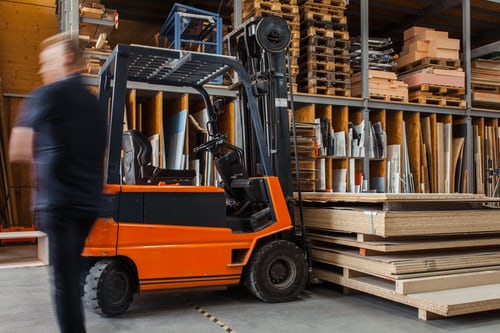The safety and security of the workforce are ongoing concerns for warehouse managers, especially since the onset of the Coronavirus pandemic. Despite the focus on infectious diseases, the risk of physical injuries in a warehouse remains as high as ever.
The good news is that technological advances continue to improve safety in warehouses. This could include upgrading trusted technology that has served the warehouse well for years or implementing cutting-edge developments that could revolutionize workplace safety. Continue reading to discover more about the impact of upgraded technology on warehouse safety.
Proximity Warning Sensors
Tags and sensors that warn an employee of their proximity to a dangerous hazard are examples of life-saving technology in a warehouse setting. These sensors use radio frequency identification (RFID) to warn a worker when they get too close to a dangerous space. This is especially helpful for protecting distracted workers from wandering into the path of heavy machinery.
To make the most of this technology, every employee should be equipped with an RFID tag. Dangerous locations and machinery should be fitted with RFID readers, which should be set to trigger alarms or even shut off equipment when a worker gets too close.
Forklift Safety Technology
Forklifts are one of the most common sources of serious injuries in a warehouse. Part of reducing the frequency of forklift accidents involves ensuring that these machines are in safe working order. This is possible through strict maintenance schedules and regular repairs. When forklifts are in proper working order, the likelihood of an injury occurring is significantly diminished.
In some situations, automated guidance systems could also be a viable option for reducing forklift safety. Many warehouse accidents involving forklifts can be attributed to operator error, and an automated guidance system could reduce those mistakes. These automated systems often rely on lasers to detect hazards in their way and can maneuver on their own to avoid a collision.
Advanced Warehouse Management Systems
A warehouse management system is vital to keeping a facility running. Advancements in modern technology are always increasing the scope of these systems, even for small-scale operations. By automating much of the tracking of shipments and inventory, it is possible to reduce the number of people on the warehouse floor at any given time. This could lead to a direct reduction in work-related injuries.
VR and AR Training
While training is crucial to avoid warehouse accidents, some hands-on training can increase the risk of serious injury for new hires. Many warehouses are making use of virtual reality (VR) or augmented reality (AR) systems that allow workers to perform hands-on training in a safe environment. This type of training represents a significant investment but could provide the skills a worker needs to avoid a serious injury without putting them at risk of undue harm.
Your Manpower is the Strength of Your Warehouse
Technological updates can significantly improve warehouse safety, but the skill and experience of your workers are still the most important factor. This is true regardless of whether you are relying on full-time help or on flex workers to help fill the holes in your schedule.
HapiGig is a digital platform that connects warehouse managers with qualified and thoroughly vetted warehouse flex workers. Become a HapiEmployer today to begin enjoying the benefits of gig labor. Contact our team to learn more about the impact of upgraded technology on warehouse safety.

